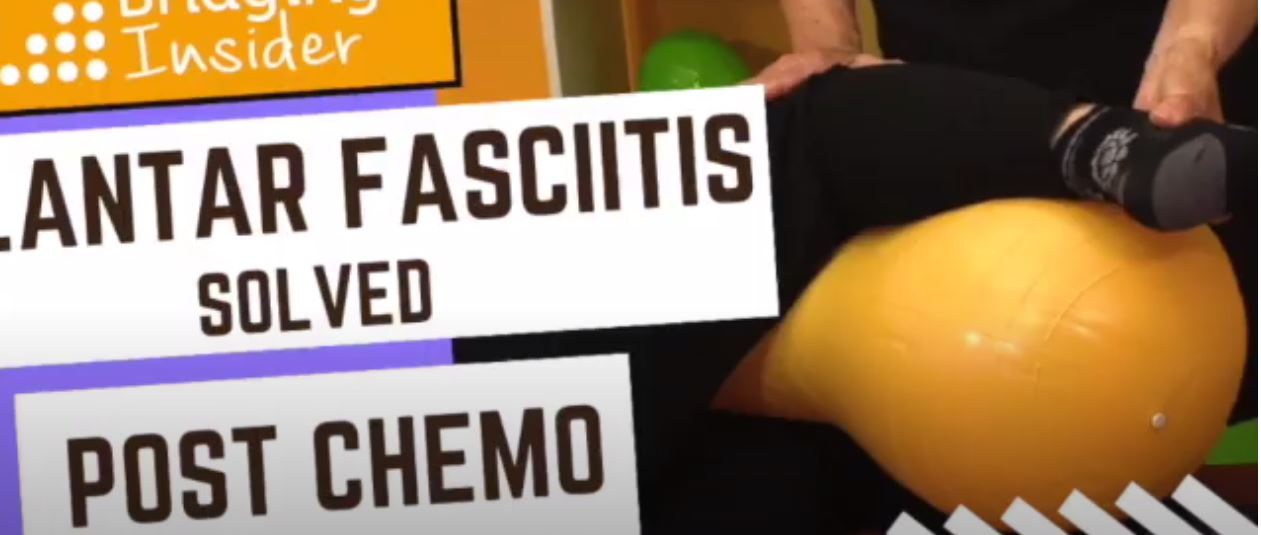Post-chemo Pains? Katie Had Foot Pain; See How Bridging Helped
Chemo is often your best shot at clearing cancer, yet sometimes the treatment itself leaves another set of issues.
Common long term post-treatment issues include:
- swelling
- nerve pain
- bone loss
To alleviate these, activity is a key part of your overall wellness plan.
Bridging has a unique role by resetting your body making it easier to be more active.
Chemo cleared the cancer, but what else does it leave you with?
This week’s guest on our YouTube channel, Katie, has been bothered by pain in her feet, commonly known as plantar fasciitis. It became an issue following her chemotherapy regimen.
She has gone through a lot of medical treatment for breast cancer including 20 weeks of chemo. If you Google post-treatment impacts, foot pain is pretty common.
In addition to impacting her ability to exercise, the pain also impacts her ease of general movement during the day.
Have a look to the surprising relationships we found impacting her feet, and how it changed with a bit of Bridging.
Post-chemo issues causing you discomfort?
Are you still trying to recover comfort, ease of movement, and confidence post-treatment? For some of you it’s a real catch-22; exercise supports your health and recovery, but it hurts to exercise.
It’s been weeks, months or years since you rang the bell signifying you were done with treatment. Time to focus on getting back to normal. Then reality hits, the ‘normal’ is actually a new ‘normal’, not your old one. Often pain is part of the picture.
You might ask your oncologist about this. Their response is often something along the lines of “that’s common” or “but the cancer is gone.” Maybe you tried some physical therapy, but found limited relief.
Now what???
Three primary reasons you still have pain are:
- Disrupted ability to move fluently due to invasive physical trauma from IV’s, picc lines and port-a-cath’s.
- Chemical irritation to your body from the inside out – your muscles hurt to move because the natural cellular expansion and contraction is compromised by all the chemicals your system has dealt with.
- Chemical interruption to the communication within your nervous system irritating nerve endings and creating weak pathways. Your movement can be slow or uncertain due to lack of nervous system feedback.
How does Bridging help recovery?
As part of our process to help you move and feel better, here are two key aspects we work through:
- Restoring micromovements in all areas. When the body’s tissue is irritated or swollen from the chemo, micromovements are shut down. By supporting and refreshing this foundational aspect of how the body functions, you begin to feel lighter and less restricted in your daily movement.
- Restoring transitions between parts of the body. Your muscles begin to work as teams again, and movement flows between joints fluently as part of an overall system.
Bridging is a gentle process
Resetting muscle relationships is done with subtle rocking micromovements and slight stretches. As we work through the layers of resetting muscle relationships, you regain movement and circulation.
When circulation improves and swelling dissipates, the body is better able to regenerate and heal the irritated nerves. The body’s healing ability with specific help is incredible!
The new you is just a few Bridging® sessions away!

